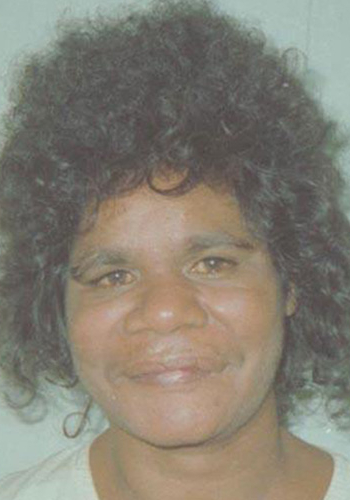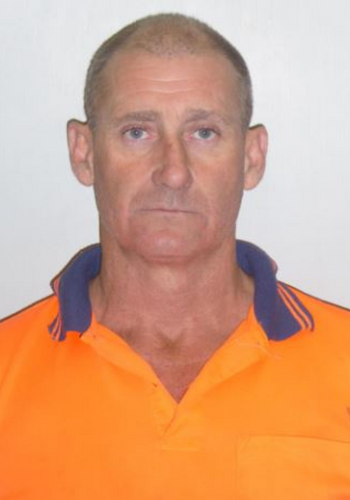Legal
The National Missing Persons Coordination Centre (NMPCC) supports and encourages the use of NMPCC content for the purpose of educating the community about the issue of missing persons. All data and other material produced by NMPCC constitutes Commonwealth copyright and is intended for general use and information. NMPCC reserves the right to set out the terms and conditions for the use of such material.

© Commonwealth of Australia (NMPCC) 2015
The NMPCC material on this website is licenced under the Creative Commons Attribution 4.0 Australia licence, with the exception of:
- the Australian Federal Police logo
- other branding and trademarks
- content supplied by third parties (see also missing persons details below), and
- other materials specifically not provided under a Creative Commons Attribution 4.0 licence.
Please give attribution to: © Commonwealth of Australia (National Missing Persons Coordination Centre) 2017.
We also request that you observe and retain any copyright or related notices that may accompany this material as part of the attribution.
Police Child ID app - Privacy Policy
The Police Child ID app, available on both Android and Apple devices, was designed and built by the Australian Federal Police (AFP) to help parents and guardians more easily collect and send important information about their child/children in the event of a disappearance or abduction.
No data entered into the app is collected by the AFP or any other Australian Police agency unless it is sent to the police following a disappearance or abduction. The AFP cannot guarantee the security of the app, which is hosted by Apple and Google Play and downloaded onto the user's personal device.
Missing persons details
Images and profile information of missing persons is personal information and has been provided by the families of missing persons for the purpose of assisting to find their loved ones. Images of missing persons are covered by the copyright of their original owners and are reproduced by the NMPCC with permission.
To obtain permission to use images and profile information of missing persons please contact the relevant State and Territory Police Missing Persons Units.
Third-Party Material
NMPCC has taken steps to both identify third-party material and secure permission for its reproduction and reuse. However, please note that where these materials are not licensed under a Creative Commons licence or similar terms of use, you should obtain permission from third-parties to reuse their material beyond the ways you are permitted to use them under the Copyright Act 1968.
Social Media
NMPCC may use social media channels for communicating with the public, including Facebook pages, Twitter accounts, YouTube channels and blogs. Subject to the terms of use of the particular channels, and except where otherwise stated:
- You may use all material posted by us on these channels under the Creative Commons Attribution 4.0 Australia licence, and
- Material posted by any other person, such as public users, is deemed to be made available to you by that person under the Creative Commons Attribution 4.0 Australia licence as a condition of use of that channel.
Privacy Policy
We are concerned about protecting your privacy. This statement describes how we handle personal information, including:
Personal details
Some forms on this site can be used to send us personal information and/or information relating to missing persons. When you submit such forms, the data is encrypted to prevent use by unauthorised parties.
If you are sending us private information you should check that you are linked to our secure server. You can do this in two ways:
- Check that the web address in your browser begins with https:// rather than just http://.
- Most browsers will show a lock symbol either in the address bar of your browser or at the bottom of the page (this may vary from browser to browser). If you see an open padlock, this indicates an unsecure site.
We will keep information that you send in a secure environment and will use it only for the purpose for which it was submitted. If you have concerns about sending information over the internet, please contact us for alternative methods of submitting information (mail, fax etc).
Email addresses
The Australian Federal Police will only record your email address if you send us a message and/or subscribe to any of our services. The address you supply will be used only for the purpose for which you have provided it, and will not be disclosed or added to a mailing list without your consent.
You are reminded that, with the exception of encrypted forms as described above, messages sent from this site over the Internet are not secure. For further information on the Internet and security, you should read the Disclaimer.
Clickstream data
Browsing any web-site, including the National Missing Persons Coordination Centre (NMPCC) site, generates a trail of the pages that are visited, and the time apparently spent displaying each page. Clickstreams are the paths a user takes when navigating a web site and the internet in general. When you visit a page or document on our site, the following information may be logged for statistical purposes:
- the date and time at which you accessed each page or document;
- the Internet (IP) address of your computer;
- the pages you accessed, and documents downloaded;
- the type of browser and operating system used;
- the number of bytes transmitted and received for each request;
- the previous site or page visited;
- the name of any search engine and search terms used to get to the page or document; and
- anonymous cookie information.
We examine this information to measure traffic through the server, usage of specific pages, and in order to deliver better services.
No attempt will be made to identify users or their browsing activities except in the unlikely event of an investigation, where a law enforcement agency (or other government agency) may exercise a legal authority to inspect the service provider's logs.
The statistics and log files may be preserved indefinitely and used at any time and in any way necessary to prevent security breaches and to ensure the integrity of the information supplied by the AFP.
Cookies
We use anonymous "first party" cookies to better analyse user navigation trends and to provide additional information to our web analysis software. Cookies may also be used in forms-based transactions to correlate the pages of a single transaction.
We do not use cookies to collect personal information, nor do we associate anonymous cookies with personal information. Cookies can be easily blocked on your computer by simply un-checking the "accept cookies" option in your web browser. This can be found under the options menu of your browser software.
Accountability
The staff who operate the missing persons site, and most Australian government agencies and websites, are subject to the Commonwealth Privacy Act 1988.
Further Information
Further information on the use of the NMPCC website and the material it contains can be found in the NMPCC website Disclaimer Notice.
Contact us if you have any questions or requests relating to material presented on www.missingpersons.gov.au.
National Missing Persons Coordination Centre
PO Box 401
Canberra City, ACT 2601
Free call: 1800 000 634
Email: missing@afp.gov.au





